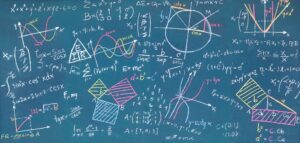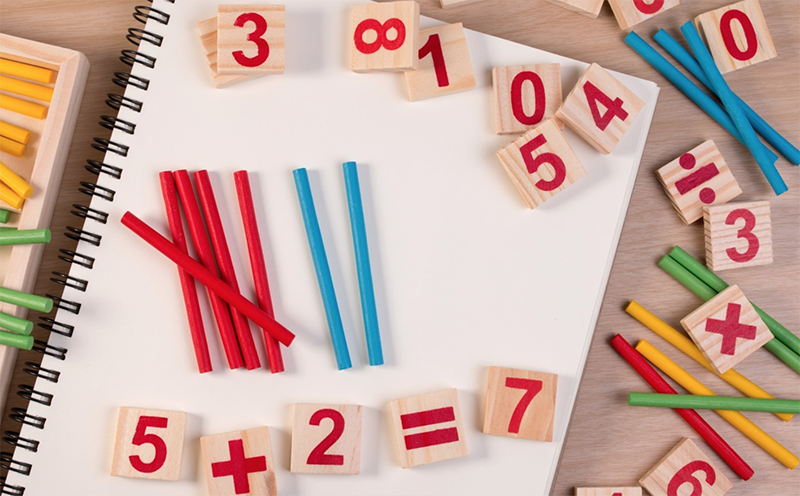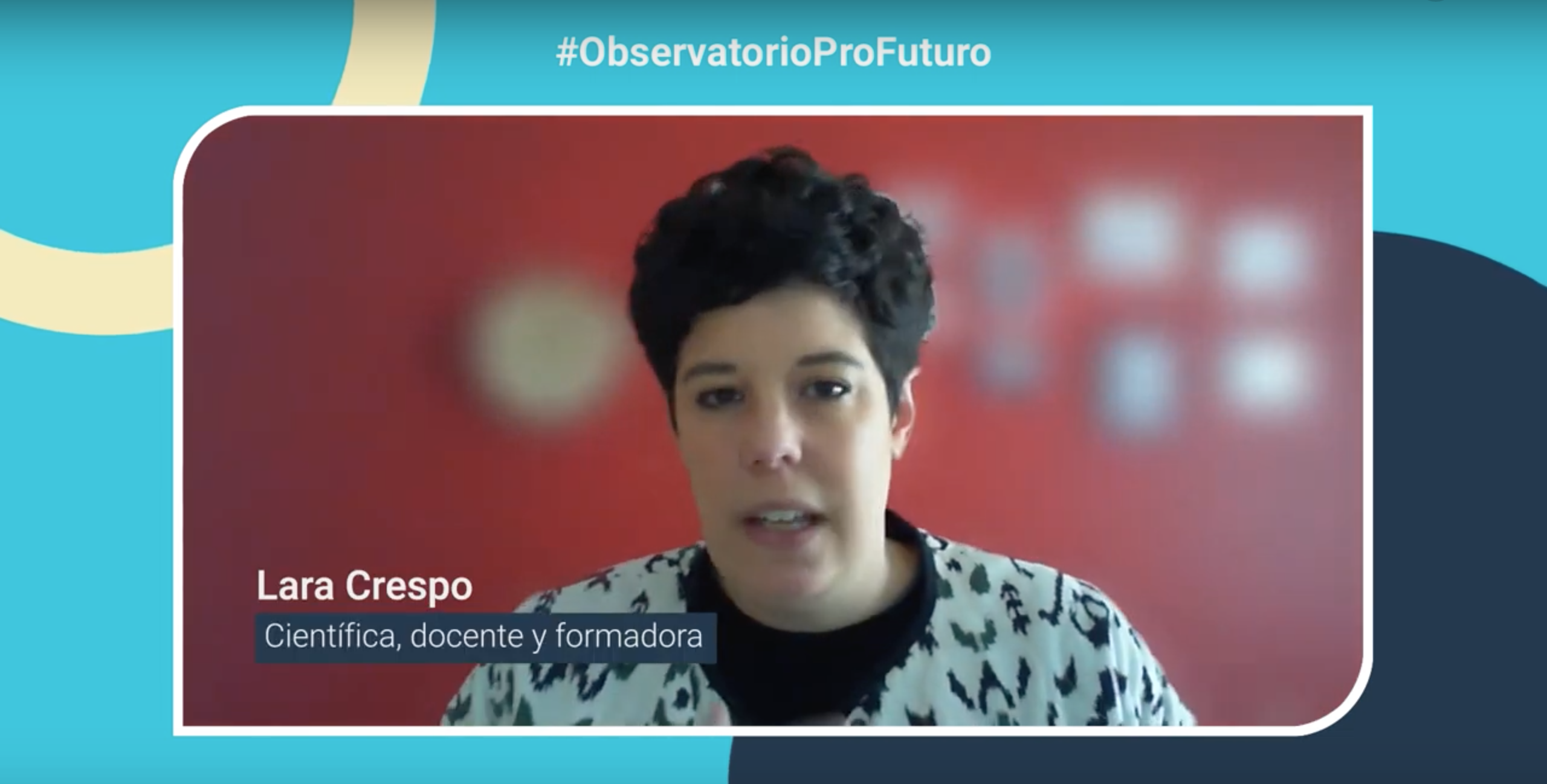Before starting an article on evidence in education, we must always begin with a prior warning: evidence is not a recipe that is given and implemented just like that. Therefore, rather than talking about evidence, we should talk about educational decisions informed by evidence, where evidence is only one part of the decision we must make as teachers. Besides the evidence, we have the context of the students and, of course, the teacher’s experience. In this way, the teacher’s experience must contribute to making a well-informed decision in education by taking the evidence and understanding very well what the students need.
With this premise in mind, we will delve into four fundamental keys for teaching Mathematics.

Design Learning Experiences for All Students
The first key to effective mathematics teaching is to design sessions and learning experiences that consider all students from the outset. This inclusive approach contrasts with the personalisation of learning, very fashionable nowadays, which often results in segmentations and hierarchies within the classroom. For example, giving additional worksheets to students with more difficulties or special exercises to the more advanced students risks reinforcing hierarchies and making some students feel inferior.
Instead, the concept of “designing for all” comes from Universal Design for Learning (UDL), which promotes an inclusive approach from the beginning. This method does not only aim for the average student but raises the basic level for everyone and allows enrichment opportunities for each student. This implies deeply understanding the students, knowing their barriers, and designing activities that raise the level of everyone from the ground up to the ceiling.
Some studies have shown the effectiveness of this approach in raising the academic performance percentile of the entire class from 54 to 98, by implementing activities designed to raise the basic level. This demonstrates that by designing for all, not only do students with more difficulties benefit, but the performance of the entire class is elevated.
The teacher’s experience must contribute to making a well-informed decision in education by taking the evidence and understanding very well what the students need.
Design Learning Experiences for All Students
The first key to effective mathematics teaching is to design sessions and learning experiences that consider all students from the outset. This inclusive approach contrasts with the personalisation of learning, very fashionable nowadays, which often results in segmentations and hierarchies within the classroom. For example, giving additional worksheets to students with more difficulties or special exercises to the more advanced students risks reinforcing hierarchies and making some students feel inferior.
Instead, the concept of “designing for all” comes from Universal Design for Learning (UDL), which promotes an inclusive approach from the beginning. This method does not only aim for the average student but raises the basic level for everyone and allows enrichment opportunities for each student. This implies deeply understanding the students, knowing their barriers, and designing activities that raise the level of everyone from the ground up to the ceiling.
Some studies have shown the effectiveness of this approach in raising the academic performance percentile of the entire class from 54 to 98, by implementing activities designed to raise the basic level. This demonstrates that by designing for all, not only do students with more difficulties benefit, but the performance of the entire class is elevated.
Reduce Cognitive Load
The theory of cognitive load explains how we process information by connecting new knowledge, which is processed in the so-called “working memory,” with prior knowledge stored in our long-term memory. When we can connect new knowledge with previous knowledge, the new knowledge moves to our long-term memory and is stored. This is when learning appears.
But working memory has limited capacity, so it is easy to overload it, especially with abstract and complex tasks like Mathematics. This abstraction generates a lot of overload in students, especially neurodivergent students whose working memory functions a bit differently.
Therefore, to learn Mathematics, it is important to reduce students’ cognitive load. How do we do this? Here are some tips:
- Small didactic steps (scaffolding): Breaking down mathematical tasks into smaller, manageable steps helps students build learning gradually.
- Didactic variables: Altering elements of a mathematical task so that students develop new strategies without changing the learning objective.
- Concrete-pictorial-abstract model: Starting with manipulative materials, moving to pictorial representations, and finally reaching the abstract. This approach helps reduce cognitive load by making the transition from concrete to abstract gradual.
- Daily mental calculation: Practising mental calculation so that students can see numerical patterns and free up cognitive space for more complex tasks.
- Eliminate distractions: Minimising distractive elements in the learning environment can help students better concentrate on mathematical tasks.
Teach Problem-Solving Strategies
Problem-solving is an essential skill in learning Mathematics that not only develops essential mathematical skills but also fosters critical thinking and students’ ability to face challenges. Let’s see how and why.
A mathematical problem is a situation that normally seems difficult to solve, requiring students to explore new methods and validate their solutions.
In teaching problem-solving, it is useful to differentiate between strategies and structures:
- Strategies are general approaches to solving problems. For example, dividing a complex problem into more manageable parts, starting from the end, or looking for similar previously solved problems.
- Structures are tools that help us organise data and solve problems, such as tape diagrams, part-whole diagrams, Venn diagrams, number lines, and logical blocks.
To teach these strategies and structures, it is effective to start with problems that are superficial and contextually similar to previously addressed ones. This facilitates knowledge transfer and the application of known strategies in new contexts.
For example, in a mathematics class, a problem can be posed: “The sister is four years older than the brother. Together they are 26 years old. How old is each one?” A student might use a tape diagram to visually represent the age difference and solve the problem. Another student might use a different strategy but the same structure, while a third might try a new strategy and structure but with the same mathematical basis.
Enhance Motivation
As is well known, motivation is one of the most important elements for learning. A motivated student is one who has a purpose, values that purpose, and feels capable of achieving it. In Mathematics, this third component often fails. Students do not feel capable of learning Mathematics and feel frustrated. How can we reverse this situation?
- Cognitive and motivational scaffolding: Providing small, achievable steps with lots of positive reinforcement at each stage. Celebrating small achievements can increase the student’s confidence in their ability to learn mathematics.
- Opportunities for success: Ensuring that all students have the opportunity to feel they have achieved something significant in each class. This can be achieved by offering tasks that are challenging but achievable.
- Social and emotional learning: Fostering an environment where students feel part of a group and valued in their contribution. Feeling part of a learning community can significantly increase student motivation and engagement.
Enhancing Motivation: A Practical Example
To illustrate how we could enhance motivation in a mathematics session, let’s look at a practical example.
- Guided Discovery: We start with a small guided discovery of three to five minutes. During this time, we perform an exercise with the class in a guided practice. We present a task that we perform together with the students and also add bonus tasks or challenge questions that everyone can try to solve. For example, if we are working on addition, we can write a challenge question on the board that students know they can try to solve if they want an additional challenge.
- Checking Understanding: Once the guided discovery is complete, it is crucial to check the students’ understanding and progress. This is done by asking questions to gather evidence about their understanding of the learning objective.
- Adjustment Based on Checking: After checking understanding, we might encounter different levels of understanding among students. Here are some actions proposed according to the percentage of understanding:
- Less than 30% have understood: It is necessary to explain the concept again in a different way. This may include changing the way of explanation, using visual representations or manipulatives, or adjusting the order of content presentation.
- Between 30% and 70% have understood: Peer learning can be very effective in this case. Students who have understood well can explain the concepts to their peers, using a language and level of abstraction closer than the teacher can offer.
- More than 70% have understood: Offer additional challenges and enrichment to students who have understood well. This may include solving problems with different representations, inventing similar exercises with different numbers, or using different structures to solve problems.
- Additional support for the remaining 30%: Divide the class into flexible groups based on the checking of understanding. Work again with students who need more support, using scaffolding techniques, visual representations, and manipulatives. Peer learning can also be used to reinforce concepts.
4. Repetition of the Cycle: Once these adjustments are made, the process is restarted with a new mini-session, beginning again with a guided discovery and checking students’ understanding.
The application of these strategies, based on evidence and adapted to the needs of students, according to the teacher’s experience, can transform the mathematics learning experience, allowing all students, regardless of their abilities or initial circumstances, to reach their maximum potential.






